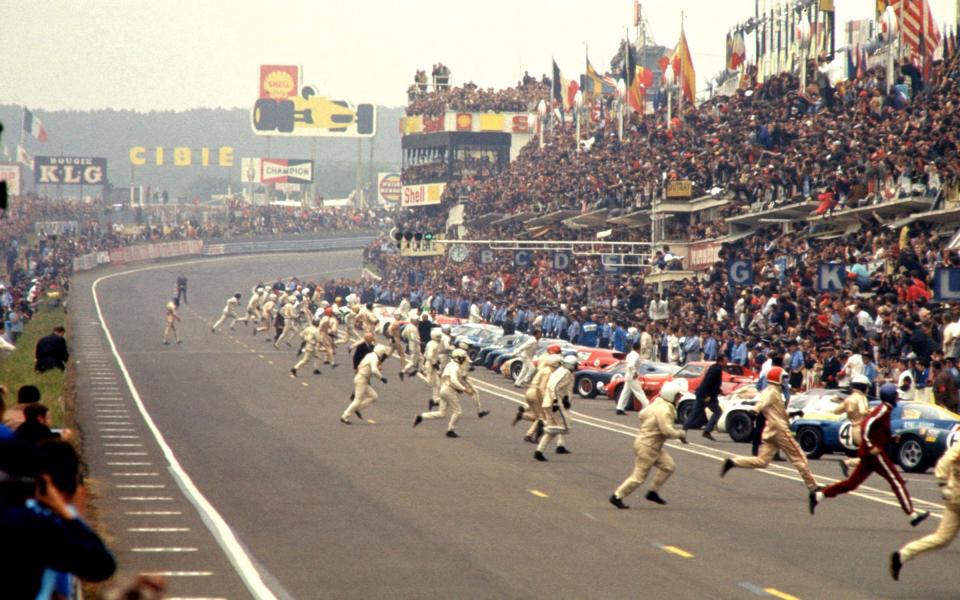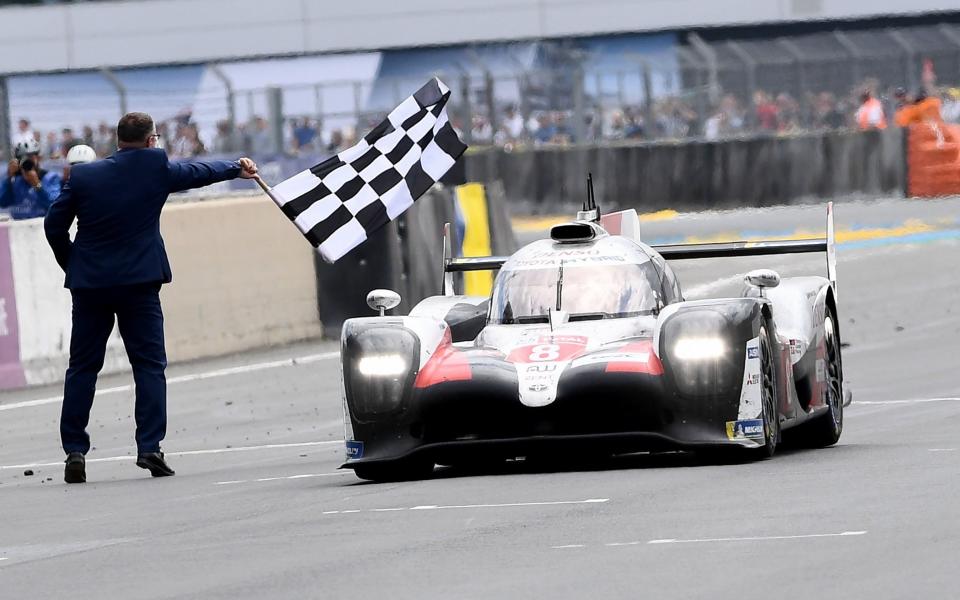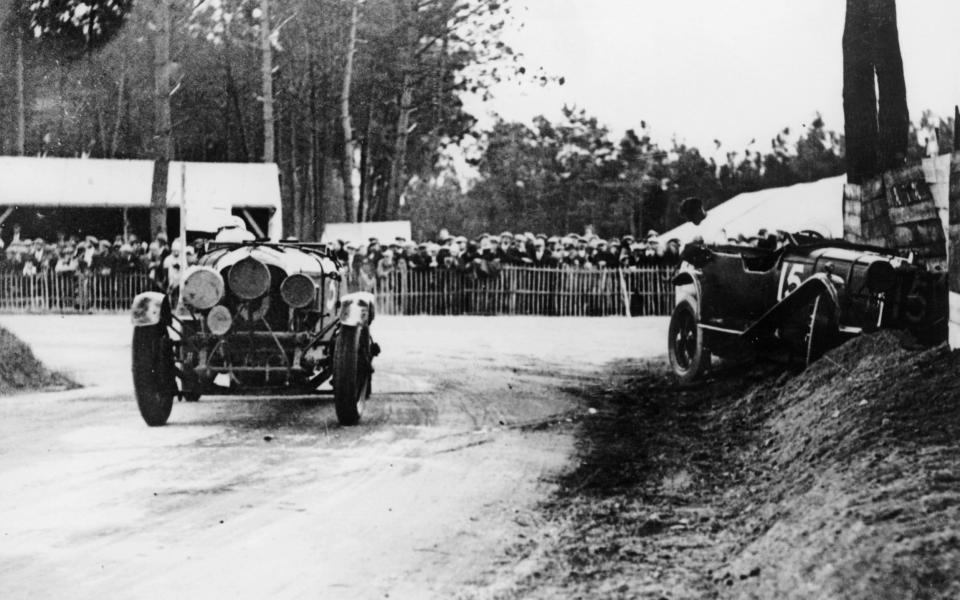Le Mans 24 Hours: how endurance racing tech trickles down from La Sarthe to the forecourt

This article was written by the late Simon Arron, a motorsport specialist, features editor of Motor Sport magazine and Telegraph Cars contributor, ahead of the 2019 event. The pioneering spirit of the event has since advanced to embrace hydrogen propulsion in a landscape dominated by a push to heavy batteries.
It is all over for another year. Last weekend, the Circuit de la Sarthe in north-western France hosted its annual showpiece, an event that first ran in 1923 and of which this was the 87th running. Nowadays the Le Mans 24 Hours attracts a crowd of about 250,000, of whom it’s estimated that more than a fifth commence their journeys from Britain.
It’s the consequence of a long-standing love affair with a very particular race, one inspired by the pioneering successes of Bentley during the 1920s, plus the later victories of Lagonda, Jaguar, Aston Martin, Mirage and McLaren, not to mention a glittering cast of British drivers that has graced the podium’s top step.
While Le Mans’ popularity has been a constant, the nature of the event has changed significantly – particularly in the modern era. There was once a time that cars had to be coaxed for the duration, raced at perhaps 85 or 90 per cent of their potential while drivers looked after transmission, brakes and tyres. But the advent of electronic guardian angels – for instance sequential paddle-shift gearboxes, which prevent fluffed changes – has removed some of the bygone mechanical risk.
Aided and abetted by cutting-edge tyre technology and ever more efficient braking materials, Le Mans has become something of a day-night-day sprint. There’s a certain irony that Formula One is often nowadays an exercise in tyre management, a percentage driving exercise of the kind Le Mans used to be. At this year’s Monaco Grand Prix, Lewis Hamilton qualified on pole position in 1m 10.166s… but set a fastest race lap of only 1m 16.167s en route to victory… and that around a lap of fractionally more than two miles. At Le Mans the margin between quickest qualifying and race laps is often only a couple of seconds around a course more than four times the distance.
Nor is it just the racing, which at times seems almost a sideshow that happens to be taking place adjacent to a large festival featuring fairground rides, classic car displays, fancy dress (strictly optional) and beer tents. Lots of beer tents… Even if you don’t touch a drop, the atmosphere remains intoxicating. The Brits might turn out in force, but so too do the Dutch, Danes, Americans and, naturally, the locals – a lively cosmopolitan cocktail.

Over time, Le Mans has also been a symbol of innovation, race organiser the Automobile Club de l’Ouest willing to embrace fresh technology. In 2012 it created an extra slot on the entry list – ‘Garage 56’ – for a car that wasn’t eligible to contend for outright victory but would be allowed to participate to showcase creative engineering. That year’s tiny DeltaWing looked more like a space rocket than a racing car, but was well received and ran respectably until sidelined by an accident.
Two years later the Nissan ZEOD RC proved troublesome, but did make history as the first car to complete a full racing lap under electrical power alone. And in 2016, the SRT41 was equipped with a system that enabled it to be adapted in less than 10 minutes to accommodate the needs of one of its drivers, quadruple amputee Frédéric Sausset.
But those are simply modern continuations of an ancient custom, for Le Mans has always had something of a pioneering spirit. Before the inaugural race, which took place at a time when road surfaces were little more than sand and dirt, part of the track – the celebrated Mulsanne Straight – was coated in chalk chippings and a tar/bitumen emulsion, a forerunner of today’s durable road surfaces and a detail that extended to the whole circuit by 1926.
Teams soon began experimenting with aerodynamic bodies – the Chenard & Walcker Z1 ‘Tank’ looked quite remarkable by the standards of 1925 – and early ideas included Lorraine-Dietrich’s use of fog lamps to combat the customary dawn mist (1926) and front-wheel drive (the seventh-placed Tracta of 1927).

Other notable landmarks include the use of radial tyres – the Lancia Aurelia GT of Giovanni Lurani/Giovanni Bracco finished a class-winning 12thon a set of Michelin Xs in 1951, 26 years before the French firm introduced the same technology to F1 – Mercedes adopting direct fuel injection for its winning 300SL in ’52 and Jaguar’s use of disc brakes on the C-types that finished first and second in ’53. Slick tyres were familiar in US drag racing from the early 1950s, but Michelin introduced them to circuit racing at Le Mans in 1967… four years before Firestone embraced the principle in F1.
In more recent times, of course, teams have experimented with biofuels and Audi turned conventional racing wisdom on its head by showcasing the potency of diesel in racing applications – a course also successfully followed by Peugeot, though the marketing benefits are perhaps a little less obvious in the present climate.
Simon Arron was features editor of Motor Sport magazine.

 Yahoo Sport
Yahoo Sport 





































